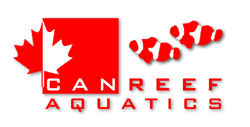
 |
|
#1
|
||||
|
||||
|
I've had my copperband for 3-4 months, and i've got it eating brine......but thats all. It's getting thinner, and thinner. What can i do to get it to eat more, or something different, to try to fatten it up a bit. I've tried mysis, Pacifica plankton, Krill, blood worms. But it'll only eat brine. Doesn't touch aiptasia either. Any Ideas?
|
|
#2
|
||||
|
||||
|
Feed them live blood worms, you can get them @ riverfront aquarium, never had one that did not like them.
|
|
#3
|
|||||
|
|||||
|
Have you tried soaking the food in garlic?
http://www.jlaquatics.com/phpstore/s...duct_ID=k-gx01 This stuff works great. Also helps in combating ick (supposedely) |
|
#4
|
|||||
|
|||||
|
You can try mixing the mysis and the brine together when the fish accidentally grabs a piece of mysis instead of brine shrimp he might get a taste for it, also try fresh clams or mussels opened but left in the shell
|
|
#5
|
|||||
|
|||||
|
Quote:
|
|
#6
|
|||||
|
|||||
|
+1 on mussels.
Fresh or frozen my Cbb loved them |
|
#7
|
|||||
|
|||||
|
Brine is no food for a copperband and he will eventually die from malnutrition if only eating brine. It's basically only water.
Try to get your hands on a live white worm culture. I have never seen a copperband refuse those for long and mine has been living on live white worms exclusively for almost 2 years now. Also try a fresh mussel open in two and give it sometime. Copperband usualy like to pick at mussel and will eventually eat them and it's very rich food for them. It's a good thing he does not eat aiptasia...as this is only water as well with toxin, nothing nutritious in there. Try live white worms enrich with Selcon and fresh mussel. Quote:
__________________
_________________________ More fish die from human stupidity than any other disease... |
|
#8
|
|||||
|
|||||
|
Quote:
My cbb loves aiptasia and berghia nudibranchs literally live on the stuff and can't live without them |
|
#9
|
|||||
|
|||||
|
they are mostly made of water and are toxic, it is well known.
just squash an aiptasia and see to what it retract to...practically nothing. Even large anemones become tiny when they expulse all the water they contain. As to their toxicity....it is also documented. Larger anemone can even crash a system and kill fish if they get stuck in a pump. Smaller aiptasia are also toxic, and not because they are smaller does not mean they are less toxic than larger anemones. Aiptasia can easily sting and kill coral. I have seen it often in my nano tank where they are growing out of control. so yeah...I came to the conclusion with observation and logic. How often do we read in these forums "my copperband ate all the aiptasias and then died"... It is easy to verify that aiptasia are not part of copperband diet, it is well document what exactly they eat. And last but not least, do your own research on this, you will find lots of info on aiptasias and copperband diet. "Like all members of the Cnidaria phylum, Aiptasia have the ability to sting for both offensive and defensive purposes. All Cnidaria have a stinging cells called cnidocytes, each of which contains a stinging mechanism, cnidae or nematocyst. Aiptasia possess both cnidocytes on their tentacles as well as specialized cinclides around the lower part of the column (small blister-like protrusions) through which it expels acontia. Acontia are threadlike defensive organs, composed largely of stinging cnidocytes cells which are expelled out of the mouth and/or the specialized cinclides when the Aiptasia is irritated. (Many anemones do not have acontia or cinclides but Aiptasia do.) The nematocysts of Aiptasia have a toxin that is more potent than the majority of corals kept by the hobbyist (with the Elegance Coral - Catalaphyllia jardinei being one exception) and can cause tissue regression in sessile corals, immobilize prey, and even kill unlucky crabs, snails or fish." "Crude extracts of the coelenterate Aiptasia mutabilis (Anthozoa, Aiptasiidae) nematocysts have been tested for their cytotoxicity of Vero and HEp-2 cells monolayers. The results indicate that the nematocyte venom contains one or more toxins with an extremely powerful cytolytic activity. An extract containing the equivalent of as little as 0.6 nematocysts/microL is sufficient to induce significant cellular necrosis, and IC50 can be estimated to be ca. 2 nematocysts/microL on Vero cells.'
__________________
_________________________ More fish die from human stupidity than any other disease... Last edited by daniella3d; 07-07-2012 at 12:57 AM. |
|
#10
|
|||||
|
|||||
|
Just to keep everyone from worrying that they may have killed their cbb by letting it eat aiptasia.... I have had my cbb for 4.5 yrs, he has eaten all my aiptasia and not only didn't die but still eats them the minute any aiptasia arrive in my tank. I placed a clam covered in baby aiptasias into the tank and the cbb had half of them cleaned off the shell before the clam reached the sandbed.....
|